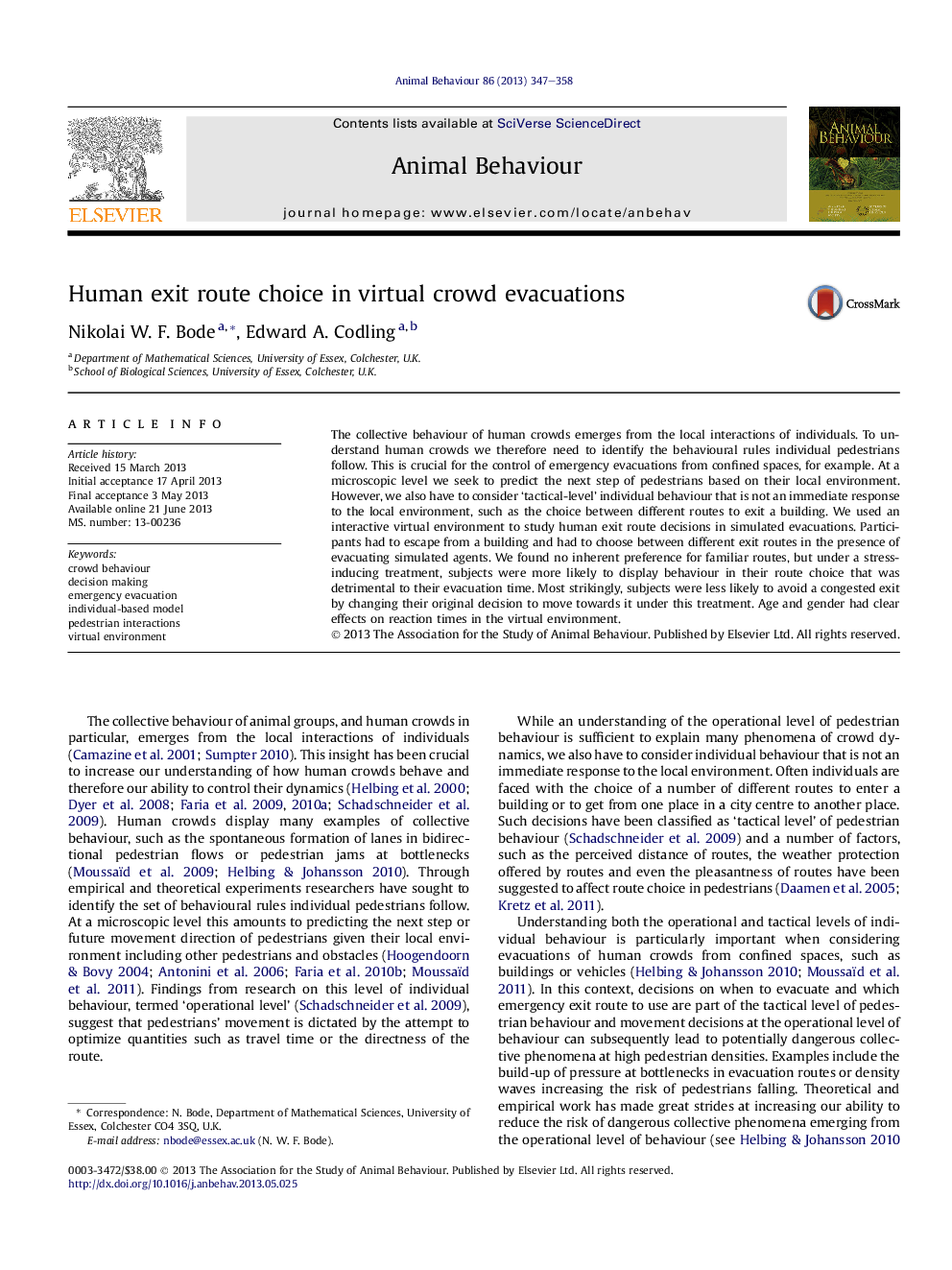| Article ID | Journal | Published Year | Pages | File Type |
|---|---|---|---|---|
| 2416600 | Animal Behaviour | 2013 | 12 Pages |
•We study human exit route choice in virtual evacuations.•Subjects had to escape from a building and had to choose between different exit routes.•We found no inherent preference for familiar routes.•Under stress, subjects showed irrational and nonadaptive decision making.•Age and gender had clear effects on reaction times in the virtual environment.
The collective behaviour of human crowds emerges from the local interactions of individuals. To understand human crowds we therefore need to identify the behavioural rules individual pedestrians follow. This is crucial for the control of emergency evacuations from confined spaces, for example. At a microscopic level we seek to predict the next step of pedestrians based on their local environment. However, we also have to consider ‘tactical-level’ individual behaviour that is not an immediate response to the local environment, such as the choice between different routes to exit a building. We used an interactive virtual environment to study human exit route decisions in simulated evacuations. Participants had to escape from a building and had to choose between different exit routes in the presence of evacuating simulated agents. We found no inherent preference for familiar routes, but under a stress-inducing treatment, subjects were more likely to display behaviour in their route choice that was detrimental to their evacuation time. Most strikingly, subjects were less likely to avoid a congested exit by changing their original decision to move towards it under this treatment. Age and gender had clear effects on reaction times in the virtual environment.
